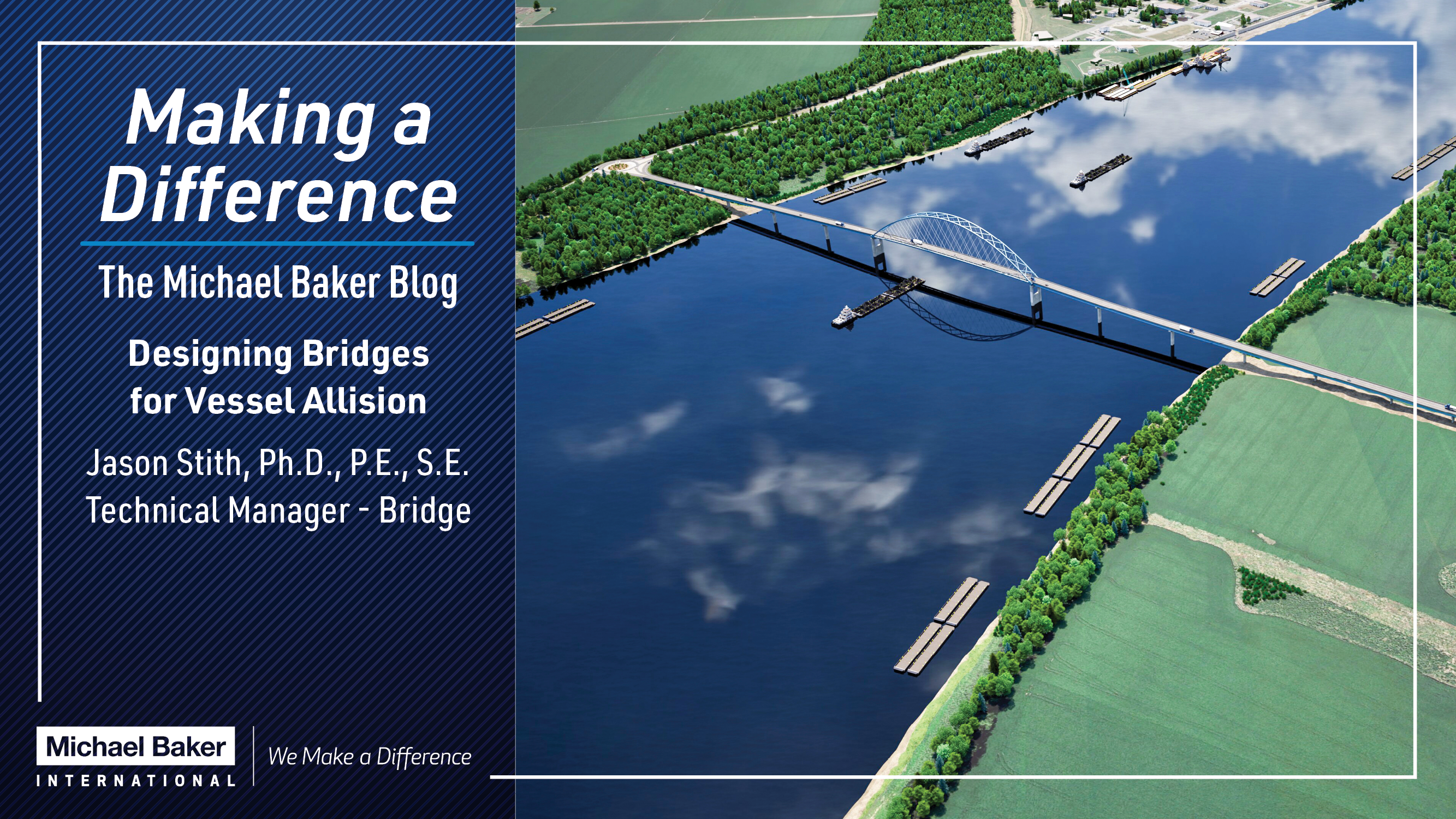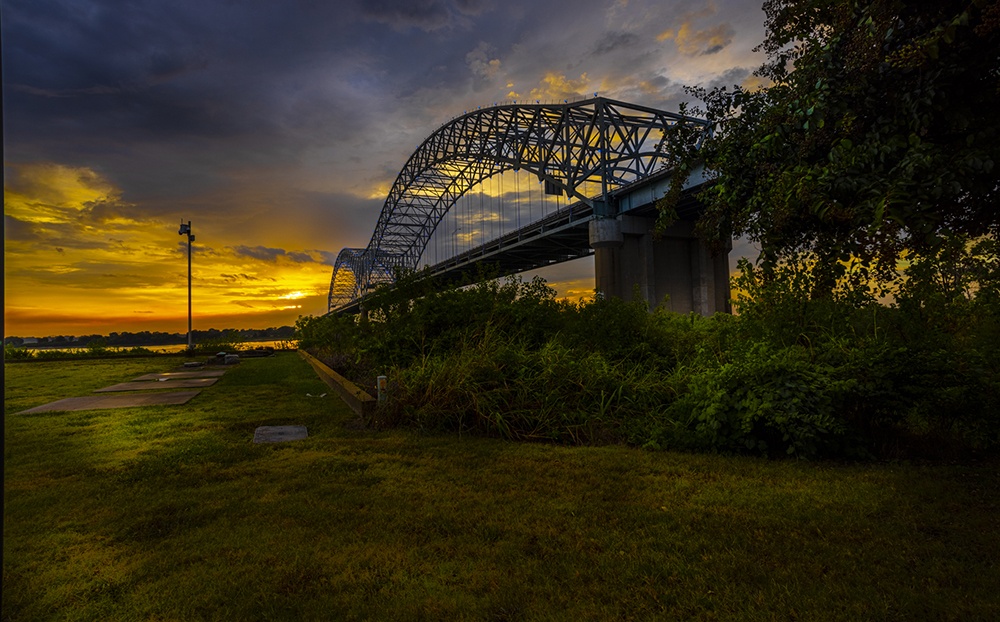The movement of people and goods by both land and sea is critically important to our nation’s economy, as well as for the traveling public going from point A to point B. Throughout the United States, there are 25,000 miles of inland navigable waterways using 239 locks, forming a network known as the "water highway." The U.S. also has roughly 3.5 million miles of rivers and tributaries that connect to the sea, while the land highway network has a total length of 4.17 million miles, aided by more than 617,000 bridges from coast-to-coast.
As engineers, safety is at the heart of everything we do. When we design bridges, we are working to ensure the safety of both vehicles traveling across the bridges and vessels traveling underneath the bridges. One key consideration is designing for vessel allision. That is, a ship striking a stationary object like a bridge as opposed to collision, which is a ship striking another moving object. This requires the collective talents of multiple disciplines, including structural engineers, hydraulic engineers, geotechnical engineers and stakeholder engagement.
The American Association of State Highway and Transportation Officials’ (AASHTO) Load and Resistance Factor Design (LRFD) Bridge Design Specifications 3.14 provides the framework for the design of accidental allision between a ship and a bridge. This probabilistic approach was developed to quantify the many low probability random chance variables that contribute to the overall risk of the bridge collapsing due to an accidental vessel strike.
As it turns out, two factors are the most important to determining demands placed on the structure: vessel weight and anticipated vessel speed. Let’s look at these two key items.
Vessel Weight
The vessel weight is a function of the facility being crossed by the bridge. On ocean-going ports, like the new Mobile Bay Bridge, which carries Interstate 10 across Mobile Bay from the George Wallace Tunnel on Blakeley Island in Mobile, Alabama, eastbound to Spanish Fort/Daphne, Alabama, large container ships will traverse under the bridge. These large vessels are in what the U.S. Coast Guard (USCG) calls blue water (oceans) and can range in size from small fishing boats to large Suez Max tankers weighing in at more than 150,000 tons. Each bridge site must understand the fleet characteristics.
Crossings over inland waterways, like the new US 51 Bridge, which spans the Ohio River between Wickliffe, Kentucky, and Cairo, Illinois, are in what the USCG call “brown water.” That is, most of the commercial traffic is made up of flotillas of individual barges pushed by a tow boat. These flotillas are typically made up of two types of barges: 1) bulk dry cargo barges approximately 35 ft. x 200 ft. and weighing over 2,000 tons, and 2) liquid tanker barges approximately 54 ft. x 300 ft. and weighing over 5,000 tons.
The key stakeholders, including the shipping and barge companies, can provide critical feedback on the type, size, configuration and number of vessels using a waterway. Other sources of government and privately collected data can be used to determine the fleet characteristics.
Anticipated Vessel Speed
The speed of the vessel is a function of the ship or tow boat speed and the water velocity. For coastal locations, the tidal movements can result in flows going in both directions, but typically relatively slow water velocities. However, inland waterways can have significant velocity depending on the river characteristics. Working with hydraulic engineers to determine water velocity and talking to stakeholders familiar with the typical operating speeds is imperative.
Other factors contributing to the risk include known history of vessel aberrancy (vessel deviating from their intended path in this part of the waterway), the geometric layout of the bridge (span length, skew angle, etc.) and pier capacity.
One final decision must be made by the owner of the bridge to determine the risk tolerance. Bridges are designated as either typical or critical/essential. Recently, our team at Michael Baker International has completed projects on the Gulf Intercoastal Waterway (GIWW), Tennessee, Cumberland, Ohio, Mississippi, and Arkansas Rivers. Throughout these projects, we found that the design demands are not significantly altered based off the owners choice of risk tolerance. Given that bridges over navigable waters are usually significant structures, designating the bridge as critical/essential for the purposes of vessel allision design is advisable and further adds to the safety of the structure.




